QuestionQUESTION: Hi Cindy,
I have a 12 week old Keeshond puppy that I purchased from a breeder at 9 weeks old. I started him already in a puppy class at 10 weeks old and he learned very quickly to sit/stay for a treat. He is very smart, and extremely stubborn and independent. He is about 90% house trained already and sleeps in a crate at nite, and stays in a larger crate during the day.
I realize I may be jumping the gun, but I am a bit worried about his behavior and not sure if its just puppy crazies or a personality/temperament issue. From the day we got him, he has bitten us a lot. I have told him "no bite", gently held his mouth closed, and put toys into his mouth to try to deter this behavior but so far, nothing is working. It is impossible to pet him at all without being bitten. He basically bites non-stop, our hands, our arms, our legs, our feet, and our clothes. He will literally run up to me just to bite me. He does not growl, he just bites. When I tell him no, he will bark in my face and then jump up to to bite whatever part of me he can sink his teeth into, and then run away. He really shows no interest in me at all, unless I am feeding him. Otherwise he completely ignores me. I am trying to socialize him by bringing him places but he bites anyone who tries to pet him. Because he is so cute and fluffy, everyone wants to pet him, but they soon retreat.
I also have a six year old Samoyed and a five year old Pomeranian, very sweet dogs. The puppy attacks both of them as well, jumping on them and biting them, grabbing their tails and not letting go. The Samoyed likes to play but after a few minutes just wants to get away from the puppy because he (the pup) hurts him with all the biting. He also relentlessly chases our cats. I have to put baby gates up to keep the puppy in a restricted area away from the other pets. I do not want to do this 24/7, but the minute I take the gates down, he is on the attack.
I do my best to keep him occupied, I sit on the floor and play with him, throwing a ball down the hall and he will bring it back, taking him on walks, etc. He is a very busy puppy and rarely ever sits still.
My hope was for this pup to be a therapy dog when he was older, and his behavior has got me worried. Keeshonds are known for being very sweet dogs, I had one for 16 years which is why I picked this breed again, but I am worried. I am trying very hard to bond with this puppy but I am finding it very difficult to find a common ground with him. I love him and of course he has a home with us forever, but I would like to do whatever I can to nip this behavior in the bud.
Not sure if it matters, this litter of pups was bottle fed from 2 weeks old due to the mother not having enough milk. I *thought* that would make this puppy more prone to human interaction, but apparently not.
The class instructor told me to shake a can of pennies, and/or squirt him with a water bottle. None of these things phase him in the least. He bites at it, barks at it, and runs away with a bratty attitude.
Do you have any advice at all? It took me 7 months to find what I thought was the right puppy from the right breeder and right now I am feeling very bewildered about how to bond with this puppy and have harmony amongst all of the pets.
Thank you in advance!!!
Carrie
ANSWER: Hi Carrie,
Thank you for your question. Try not to be too frustrated. It sounds like you have a perfectly normal puppy!
Also, thank you for telling me that your puppy was bottle fed - that gives me important information that is pertinent to your puppy's biting problem. Normally puppies learn bite inhibition from their littermates and their mother. If they bite too hard, their littermates stop playing and walk away, like your Samoyed, and mother starts pushing pups away when they start biting too hard while they nurse. This is part of the normal weaning process. So your puppy did not have the benefit of this early learning that would have helped him learn to have a softer bite.
But all is not lost! This is a common problem and one I can help you with. First of all, do not use a squirt bottle or shaker can with your puppy and stop saying, "No bite." I'm not sure where that originated, but it is not an effective way to teach puppies to soften and inhibit their bite. Dogs learn better when we manipulate the rewards they receive or don't receive for their behavior.
Your goal in teaching your puppy not to bite should be to teach him to gradually soften his bite until he is no longer even mouthing you. The reason I say gradually is because we want to teach the puppy to inhibit the bite rather than stop it all together right off the bat. If we were to punish biting in an effort to stop it altogether without teaching the puppy to gradually soften his bite he would not learn this important lesson of inhibiting his bite and when under stress at some later time in his adult life he would be likely to bite down with full force! If we teach a puppy to inhibit his bite, he will be less likely to bite down hard under stress and avoid mouthing people in his day to day interactions.
Basically you get whatever behaviors you reinforce, and behaviors you don't reinforce go away. We also need to teach the puppy what to do instead, something called a replacement behavior. To teach your puppy to inhibit his bite, you need to do what your Samoyed does and stop interacting completely when your puppy bites too hard, eventually when he mouths you at all. Do not say anything or do anything other than to immediately cease interacting with your puppy for 5-30 seconds. Don't get angry and don't look at your puppy, just withdraw your attention.
You are doing the right thing to redirect your puppy's attention to an appropriate chew toy when he is biting you. I like to leave Nylabones and natural white bones lying around on the floor so that they are always available whenever my dogs have an urge to chew. When they are young, I teach them by taking whatever they might have that belongs to me and exchanging it for a chew bone. I even have them available in my car. When they get gnawed down, I simply replace them.
Withdrawing your attention, including eye contact from your puppy when he bites on you is a form of punishment called negative punishment - you are removing what your puppy wants to stop the behavior you don't like. Meanwhile you need to give your puppy other ways of interacting with you. It sound like part of your puppy's mouthing behavior is aimed at getting your attention. It is important that you do not allow your puppy to continue to get attention from you this way. Simply tuck your hands under your arms and avoid eye contact - say nothing! When your puppy is not expecting attention, give it to him, bit try to give him attention when he is either sitting or lying down. I teach my dogs and my clients' dogs that they must be sitting to receive attention. I call this the "please" position.
Also - be sure your puppy is getting enough play time and at least one daily walk outside off the property daily. It doesn't need to be a long walk, but he needs the mental stimulation as well as some mild exercise.
I hope this helps! Your puppy should be able to learn bite inhibition if you follow these instructions, and I see no reason he won't be able to become a therapy dog in the future!
Cindy
---------- FOLLOW-UP ----------
QUESTION: Hi Cindy,
Thank you so much for the great reply! The bottle feeding / biting makes total sense to me now. It was actually the trainer that advised the can of coins and squirt bottle. I have switched him to a different class with a different trainer that starts next week. I was not overly happy with the first class - he was the only puppy in the class, all the other dogs were a year or older, all rescues. I'm not sure it was the best environment for him, even tho the class is Beginner Puppy. This class is given by the local humane society and all proceeds are donated to them, and I liked that idea, but not the class structure. I think the new class will have a better structure and trainer and more puppies his age and size.
Any advice on how to get him to stop chasing the cats? When he catches them, he starts to hump them. I have Persian cats that are little diva's and they are mortified.
Another thing which I think has contributed to all his energy - the breeder that raised him does not coddle her puppies, she believes in getting them introduced to all sorts of experiences from day one. She lives on a large piece of property in the mountains, and would take all the puppies for a mile hike each day, and let them run through the trails. She built them little agility courses inside and out, with tunnels and steps. She is doing construction on her home so they were exposed to a lot of noise. The puppy has no fear of anything and is not in any way skittish. He does not like the leash or my fenced in yard, he goes right to the gate and scratches and barks at it because he wants to be outside of the confined area. I do take him for walks but he clearly wants to be in charge of the walk and is used to having freedom to run wherever he wants to, which I cannot allow as I live in an area with cars driving around. Its kind of cute, at such a young age he is very determined and extremely smart. I think once I curb some of this behavior he is going to be a wonderful dog.
Thank you again! I will definitely implement all of your advice immediately.
Carrie
AnswerWell, it sounds like your puppy has developed some resilience, which is good.
Puppies in general do not need a lot of exercise, but they do need socialization and environmental enrichment. Be careful not to stress your puppy's joints by taking him on an agility course before his joints are fully developed around the age of 9 months to a year or more. Consult your vet on this. Generally speaking, puppies get enough exercise through play and short walks.
It is a good idea to start getting the puppy used to the feel of a leash at an early age. You can do this by attaching a light leash to your puppy's collar or harness and letting him just drag it around the house - supervised at all times! You must keep the puppy under close observation so he doesn't end up getting tangled up in his leash or hurting himself.
I'm a clicker training so I teach loose leash walking, or everyday walking without a strict heel using clicker training. Here is a good tutorial on how to do that: http://www.youtube.com/watch?v=sFgtqgiAKoQ
I recommend any of the videos that Emily Larlham (a.k.a. "kikopup") has on Youtube. Another trainer who has good video tutorials is Donna Hill (a.k.a. "supernaturalbc2008" and "supernaturalbc2009").
Here are some good articles about humping: http://dogtrainer.quickanddirtytips.com/humping-mounting.aspx, http://www.dogstardaily.com/blogs/humping-normal-yet-rude-and-lewd.
I generally take this approach re humping: interrupt the humping and refocus the dog, make sure the dog is getting enough exercise and mental stimulation and figure out whether your dog is doing this for attention - if he is, teach him something else to do for attention, such as sitting and making eye contact.
I would take this approach when teaching your puppy not to hump the cats: http://www.youtube.com/watch?v=IR7TvrUQ_1k. Basically what you want to teach the puppy is an alternative way of interacting with the cats. Click when your puppy is near the cats and not harassing them. You must follow each click with a food treat for the clicker to maintain its power as a reliable predictor of a reward!
Make sure your cats have an escape route and monitor the interactions between your puppy and the cats, as I'm sure you are already doing.
For information about clicker training and how to get started, see this article I wrote for Animal Info Publications: http://animalinfo.com.au/fact_sheets/view/2/25/172/Getting_Started_with_Clicker_
It sounds like your puppy is pretty confident. I would like you to think about channeling your puppy's energy rather than "curbing" it. If you use positive reinforcement training, specifically clicker training you will not suppress your puppy's activity, but you will engage him in more constructive behavior and teach him to think. It will also calm him down naturally!
Be careful not to give in to your puppy's every want. Work on teaching him impulse control by teaching "leave it" (Emily has a good video on this). Require your puppy to sit and make eye contact with you to gain access to the other side of the gate, and work on recall (coming when called) so that you can safely leave him off leash.
I encourage you to learn more about clicker training from a qualified instructor. You can find a certified clicker trainer on the Karen Pryor website or by calling 800-472-5425. You may be fortunate and have one in your area! If not, see the videos that Emily Larlham and Donna Hill post on Youtube and check your library for books on clicker training.

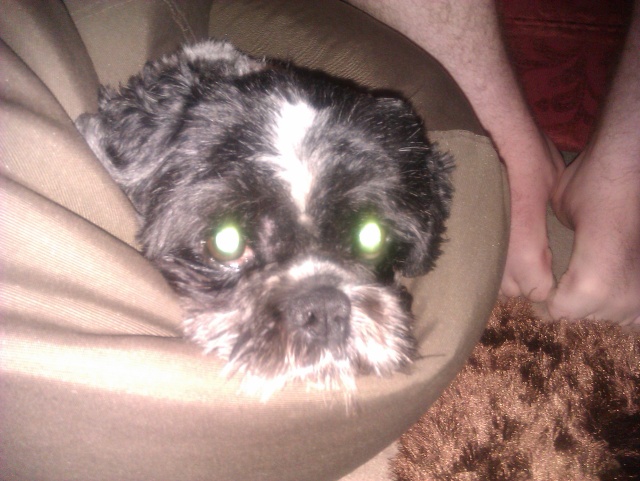 having problems with toilet training
Question
Oscar
hello
A friend of ours dog, Oscar is a 5
having problems with toilet training
Question
Oscar
hello
A friend of ours dog, Oscar is a 5
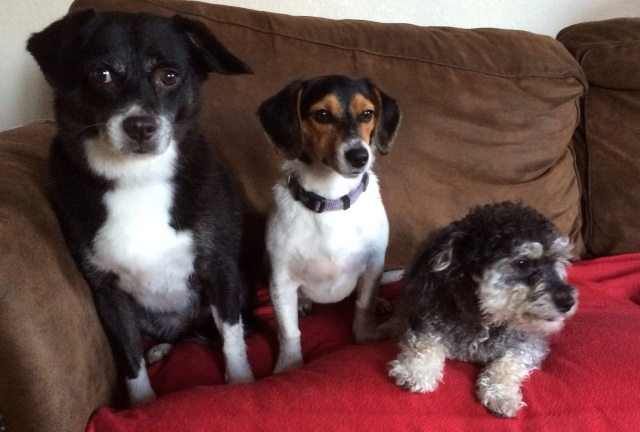 Dog aggression
Question
The 3 of them
I have 3 spayed female do
Dog aggression
Question
The 3 of them
I have 3 spayed female do
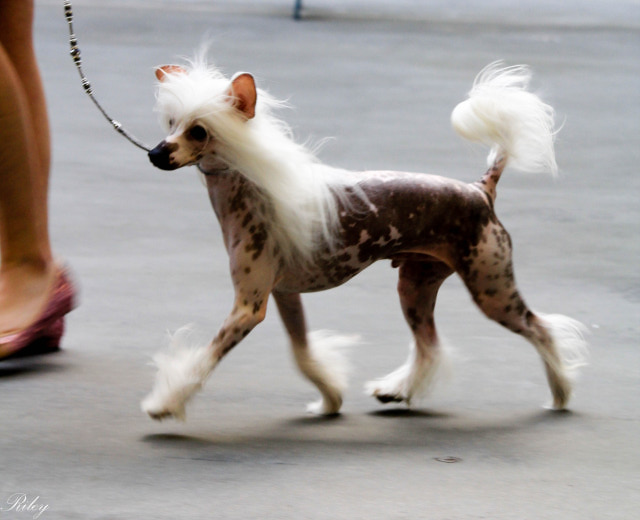 Territory Marking
QuestionHi Kathleen and thank you in advance.
I have a
Territory Marking
QuestionHi Kathleen and thank you in advance.
I have a
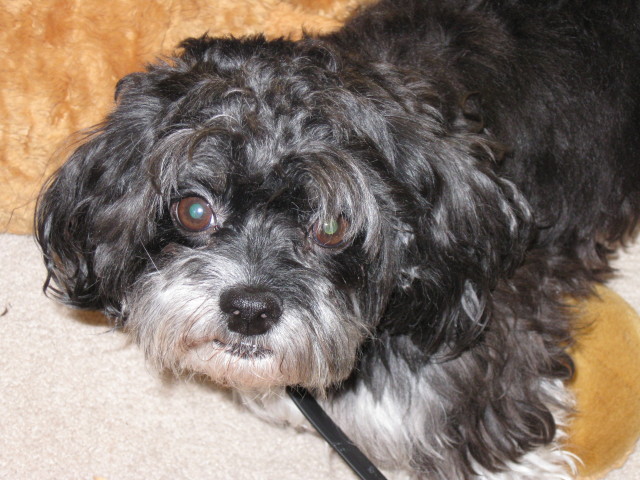 Fearfull rescue dog
Question
Kiah
I have a puppymill rescue. She is a
Fearfull rescue dog
Question
Kiah
I have a puppymill rescue. She is a
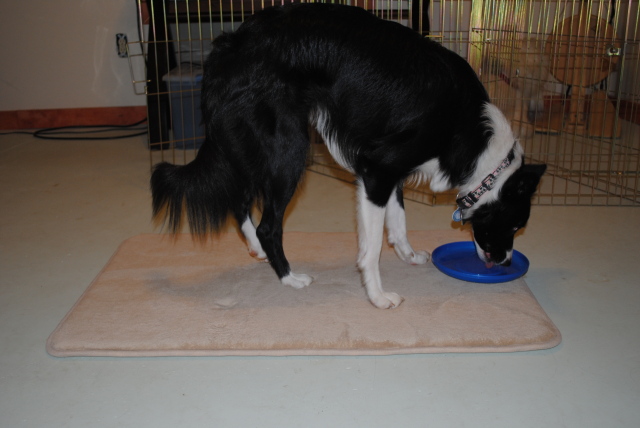 Peeing on edge of training pad
QuestionI have a 3 year old Poodle who has been house t
Peeing on edge of training pad
QuestionI have a 3 year old Poodle who has been house t